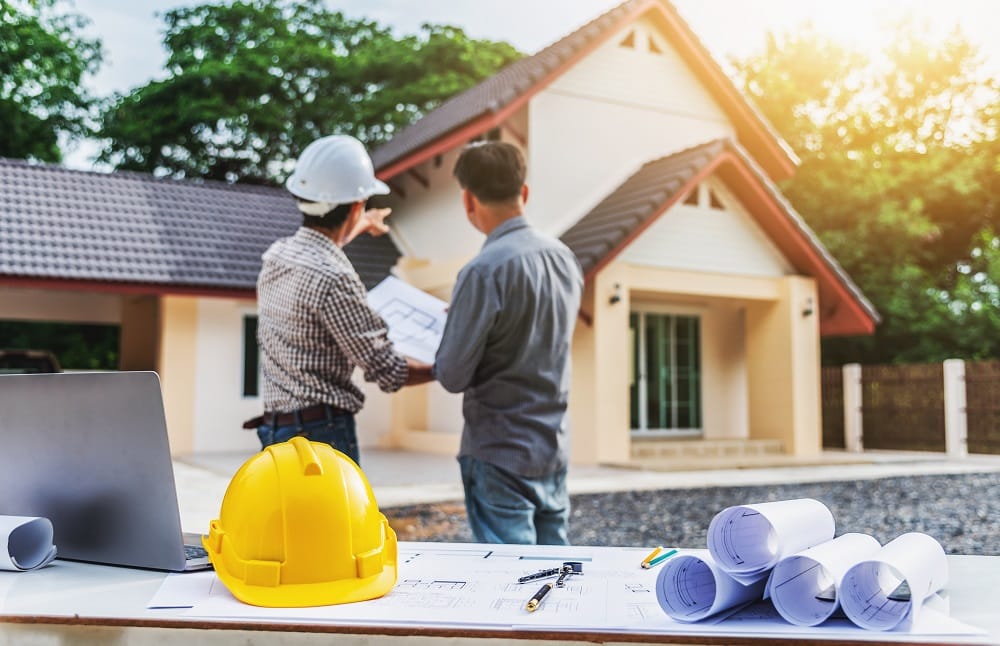Your home is one of the most expensive investments you will ever make. All homeowners will need to finance household repairs or replace essential items over time. The cost of fixing up a house can vary widely and is determined by your needs and preferences.
It’s very easy to get caught up in the excitement of putting a new roof on your home, replacing leaky windows, or updating your landscaping when those are actually the most expensive parts of the project. You must also consider routine maintenance costs and the costs of all major and minor repairs. Once you have assessed all of your expenses, you’ll be better equipped to make an informed decision on how much you need to spend to fix up your home.
Essential Structural Repairs
Some repairs are crucial. Issues with your electrical system or wires can cause a fire. You will have to repair or replace items with water damage if your roof leaks. Septic backup from a blocked pipe can also cause damage inside your home.
A home that has an outdated electrical panel or damaged wiring is a safety hazard. The cost of updating an electrical panel is normally between $503 and $1,735, while repairing wiring can cost thousands of dollars. The amount will depend on how much wiring needs to be replaced.
Water damage in your home can required you to replace flooring, beams, and drywall. It can also cause mold. Common plumbing issues cost an average of $150 to fix, while replacing pipes or a water heater can cost thousands of dollars.
Typical roof repairs cost less than $1,400. Costs may increase, though, if your entire roof needs to be replaced. Other common crucial repairs include repairing or replacing your HVAC system, replacing drafty windows, removing mold, and fixing damage from termites and rodents.
In some cases, it may be better to find a local home remodeling expert who can give you honest, professional opinions on the best course of action. Professional contractors possess the skills, training, as well as equipment for building maintenance and renovations. Not only will this ensure that you don’t waste your time and money to work on a remodeling project, but it’ll help you feel comfortable that the people you hire are capable of fixing up your home safely and professionally.
Items that Need to be Repaired or Replaced

Homes typically contain several appliances, including refrigerators, washers, dryers, and stoves. Almost 3,000 home fires in the United States are caused by dryers annually. Dryer repairs by a skilled technician can prevent fires and washer repairs can prevent water damage.
Appliances that aren’t working properly consume more electrical power, so if your refrigerator or freezer stops working it can cost hundreds of dollars to replace the food inside. You may also spend a lot of money eating out if you can’t use your stove or microwave to cook.
To prevent costly appliance failures, turn to appliance repair professionals at oregonappliancerepair.com. Their trained technicians can ensure your appliances are working optimally, and your warranty may even cover the cost of the repairs.
Appliance repair costs averaged $175 per repair as of 2020. You could spend more than this if your freezer stops working and food is spoiled. If your electric bill spiked because of a problem with an appliance it will go down once your appliance is repaired.
Optional Upgrades
Fixing up a home can involve both essential and optional changes. Optional changes are things that do not have to be done in order to ensure the safety and function of your home, but that you want to complete anyway.
Cosmetic changes are often optional. Let’s say every room in your home is painted pink. You may consider it a top priority to repaint the walls. While painting typically costs between a couple dollars per square foot, this can translate into as much as $850 per room.
You may also want to upgrade items such as appliances and fixtures. Perhaps you would like to remove lights and install units with ceiling fans. You may prefer a different color of tiles in your bathroom. These changes can range from hundreds to thousands of dollars.
Optional upgrades can be prioritized and completed over time. Repaint primary rooms and wait to paint rooms you don’t use regularly. Change fixtures in the rooms you spend the most time in first. Purchase new tiles and fixtures when they are on sale for additional cost savings.
Costs and Financing

Determining a budget for completing home repairs can be challenging and your costs may vary for several reasons. You may be capable of performing some tasks yourself, which can save you money, or be able to buy supplies on sale.
In this economy, homeowners are tightening their purse strings just to stay afloat. When homeowners see costly repairs, they tend to want to do it themselves instead of contacting a local contractor to take care of repairs. However, before deciding on doing the work yourself, you need to consider all of your repairs and what these will cost you versus hiring a professional.
Unexpected costs can increase your budget. For example, if you’re replacing carpet and discover rotting hardwood floors beneath the carpet, you may need to repair the flooring. When budgeting, you should overestimate costs to allow for unexpected repairs.
There are also hidden costs of home repairs. You may need to eat out if your kitchen will not be functional during repairs. Financing repairs will cost you money over time, which should be considered in your budget. It’s important to understand that the costs are not just the initial fees you pay for the repairs, but also the ongoing costs that include interest, taxes, and monthly payments.
Turn to the professionals at Lending Builder to determine your financing options where you can learn about personal loans, loan terms, and lenders. You can ensure you have all the potential loan options to consider so that you can make the best choice.

